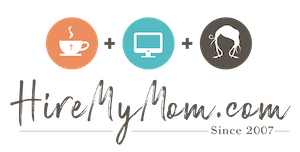What Skills to Highlight on Your Résumé
No matter where you are in your career, deciding which skills to list on a résumé can be tricky. After all, you have so many talents, which ones should be included in job applications? If you are looking to reenter the workforce after being a stay-at-home parent full-time, there are actually skills you used to raise your children that can go on your résumé. If you are looking to make a career change, then you most likely have a general idea of which skills to list, but this blog can be a good refresher for you!
The Basics
It is important to tailor your skill listed on your job application materials for each position you apply to. Of course, there are some core skills that are good to keep from application to application such as time management, being organized, and the ability to work independently. However, employers are also looking for extremely detailed talents that you might have. For example, if you have experience with Microsoft Excel, that should be listed. Depending on how you want to set up your résumé, you can either just list what you have experience in such as Microsoft Excel, WordPress, etc., or you can also include the number of years of experience you have. Keep in mind, employers want to be able to look at your job application and quickly determine what your skills are. If you already have lots of text on your résumé making it look crowded, stick with listing just the skills.
Reentering the Workforce
If you are reentering the workforce, you may feel lost as to what skills to put down in a job application. Sometimes, it can seem like you do not have talents to include, especially if you have been out of the workforce for an extended period of time. However, raising kids requires lots of wonderful skills that can easily be transferred to the workplace. Some talents include: time management, administering schedules, meeting deadlines, multitasking, management, and more! If there is room on your application, list some details about how you gained these skills. Include this in your cover letter too, where you have more room to elaborate on how you will use those talents in a job.
Career Changes
If you are making a career change — whether you are moving up the corporate ladder or trying something new — you can call on your past experience to list on your résumé. It helps to be very specific. For example, if you managed a team, list that as a skill and include the size of the team, length of time you managed them, and if it was an international team, it’s good to include that too! Keep in mind that you need to tailor your experience based on the job you are applying for, so on one application you might list team management of a team of ten, and on another application you might mention that team was international so you have experience managing different time zones.
Keywords
For more guidance, look at the job listing itself. What keywords does the company use? Do they mention someone who is organized, or do they ask if you have experience with project management software like Asana? Use the description to write your résumé! Use important phrases that you notice repeated in the description to highlight your own experience. Not only does this help companies fit your experience into what they are looking for, but it also shows that you have a good grasp of the job description — and that you spent time truly reading it!
If you need help figuring out what to list on your job application, chat with our advisors as part of our Job Seeker Advisor Services. An HR expert can guide you through creating the perfect résumé for your dream position.
Do you have more tips you want to share with us on what skills you choose to put on your job application? Let us know!


